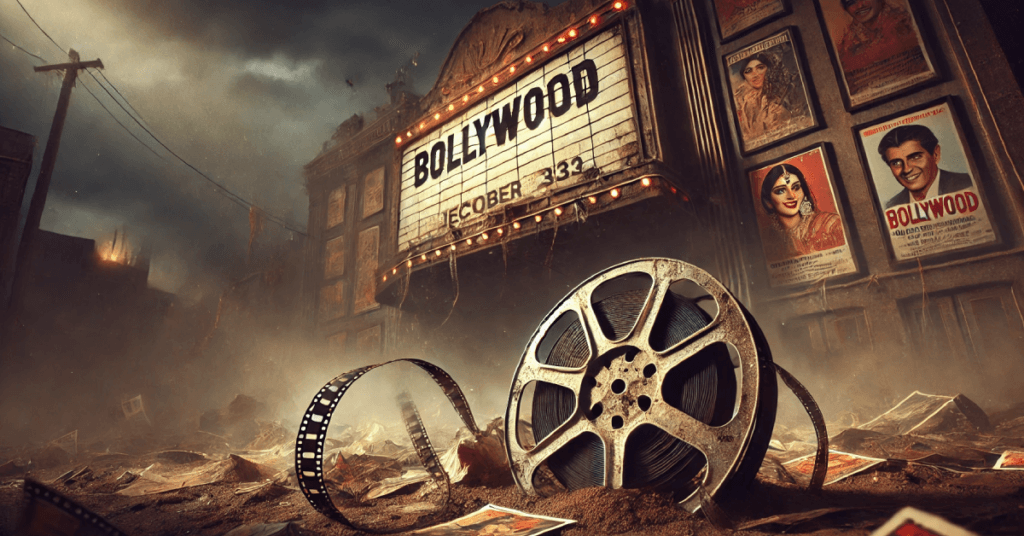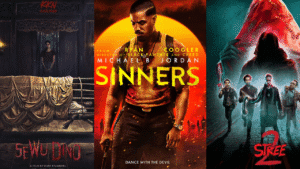Bollywood isn’t running out of money, actors, or glossy visuals—it’s running out of soul. The industry continues to churn out films at a breakneck pace, but somewhere along the way, it forgot why we tell stories in the first place.
What used to be a space for personal vision, poetic expression, and emotional depth has increasingly become a factory. A place where scripts are stitched together like trend-driven checklists, directors are hired post-casting, and storytelling is bent to serve marketing decks. It’s not a lack of talent—we have that in abundance. It’s a lack of respect for the process of filmmaking. A process that, when done right, breathes life into a story. And when done wrong, turns it into a lifeless product dressed in cinematic makeup.
This isn’t an attack on mainstream or commercial cinema. It’s a critique of the broken machinery behind it. The system that has made filmmaking more about “content creation” and less about crafting meaningful cinema.
The Assembly Line Mentality
The current Bollywood model functions like a corporate assembly line. The first step? Find a “concept” that sounds buzzy enough to pitch. Next? Attach a star. Whether or not the actor fits the role or resonates with the character is irrelevant—their presence guarantees financing. Once that’s locked in, the rest falls into place: producers, marketing agencies, brand partners, and distribution channels. Only then do we ask the most important question: Do we have a script?
In most cases, the answer is either “we’ll get one” or “we’ll fix it along the way.” Rewriting happens on set. Characters change according to last-minute feedback from marketing teams. Songs are inserted as afterthoughts to hit trending reels. And the story—what was once the heart of the project—becomes a mere vessel to carry the noise.
In this system, originality suffers. Storytelling is driven by what “worked last year” or what’s “hot right now.” There’s no time for quiet reflection, deep research, or emotional authenticity. The film becomes a product, not a piece of cinema.
Star Power Over Story Power
There was a time when actors submitted themselves to the demands of a role. They transformed, physically and emotionally, to become someone else. Now, more often than not, the story is reshaped to accommodate the actor’s image. This reversal of creative priorities is one of the most damaging aspects of the current system.
Producers cast stars not for their suitability, but for their market pull. A script’s emotional truth is diluted to preserve an actor’s on-screen persona. A deeply flawed character might suddenly need a “redemptive” arc to ensure audience sympathy. A quiet, introspective story gets rebranded as a glossy drama to justify a superstar’s presence.
This obsession with “bankability” creates a dangerous loop. The same stories get retold with minor cosmetic changes. Characters blur into one another. And soon, entire genres begin to lose meaning.
Script as an Afterthought
The foundation of any great film is its script. But in Bollywood, the script is often the most neglected element of the process. Writers are brought on board after the key decisions have been made. Deadlines are unreasonable. Development time is laughably short. And the brief is clear: deliver something quick, catchy, and “mass-friendly.”
Screenwriting has become transactional. Writers aren’t treated as creative collaborators—they’re hired to plug holes. Often, they are underpaid, uncredited, and cut off from the rest of the filmmaking journey. This marginalization leads to shallow narratives, paper-thin characters, and emotional beats that feel engineered rather than earned.
True screenwriting requires vulnerability. It demands time, honesty, and a certain distance from formula. But none of that fits into the current production schedule. The result? Films that look great on posters, trailers, and Instagram—but crumble under emotional scrutiny.
The Corporate Takeover of Creativity
Once upon a time, producers were patrons. They believed in stories, in filmmakers, in intuition. Today, studios function more like content factories, driven by data, trends, and social media analytics. Scripts are tested with focus groups. Trailers are cut based on algorithmic heat maps. And entire projects are greenlit because they “score well with Tier-2 audiences aged 18–24.”
This data-driven approach may work for product launches—but cinema is not a product. It is an art form that requires gut, risk, and an occasional disregard for numbers. When studios rely too heavily on projections and market reports, they lose the very thing that makes cinema powerful: its unpredictability.
Somewhere along the way, storytelling became content. Filmmakers became content creators. And the human experience—raw, complex, and unquantifiable—was edited out of the final cut.
The Disappearing Director
In many Bollywood projects today, the director arrives late to the party. By the time they are brought in, the cast, budget, and release date have already been decided. Their job is reduced to managing the chaos and ensuring the film wraps on time.
This disempowerment of the director is one of the biggest red flags in the current system. A director is not a project manager—they are the creative soul of the film. If their voice is missing or subdued, the film is bound to feel directionless, no matter how polished the production.
Many independent and first-time directors find themselves compromised before the camera even rolls. They must negotiate their vision against the demands of financiers, stars, and marketing teams. And unless they are backed by a strong track record or an influential name, their creative control is minimal.
A Few Bright Lights
Despite the dysfunction, there are filmmakers in Bollywood who continue to resist the system, who still believe in long development cycles, deep research, and emotional truth. They prove that you can make deeply affecting cinema within the system—if you are willing to fight for it.
These are the exceptions, not the rule. But they are a reminder of what Bollywood can be. A place where stories matter. Where silence can speak louder than spectacle. Where characters are allowed to fail, change, and grow without being judged by Friday box-office numbers.
The Way Forward
If Bollywood wants to evolve—both artistically and commercially—it needs to rethink its process from the ground up. It begins by treating the development stage as sacred. Writers must be empowered, paid fairly, and made part of the filmmaking journey from start to finish. The script must be respected as the soul of the film, not a placeholder for improvisation. Directors need to be brought in early and given the creative autonomy to shape the film’s identity—visually, emotionally, and narratively. Casting should be driven by character and story needs, not merely market demands. Pre-production must be given the time and attention it deserves, allowing space for workshops, rehearsals, and rewrites that strengthen the material. Most importantly, Bollywood must be willing to take creative risks. Not every film needs to cater to the widest demographic or chase viral success. Some films can be intimate, quiet, unconventional—and still leave a lasting impact. To support this shift, the industry must invest in nurturing a culture of cinema through film schools, labs, mentorships, and platforms that encourage dialogue, experimentation, and reflection.
Bollywood doesn’t need to imitate Hollywood. It doesn’t need bigger budgets or better VFX. What it needs is a return to sincerity. A return to process. To the slow, painful, and beautiful art of making films that matter.
Because no matter how much money you pour into a project, no matter how many stars you cast or reels you trend—if there’s no truth in the story, the audience will feel it. They may not say it out loud, but they will leave the theatre a little emptier, a little more disconnected.
Cinema and audience deserve better than that.
More Articles for You:


























